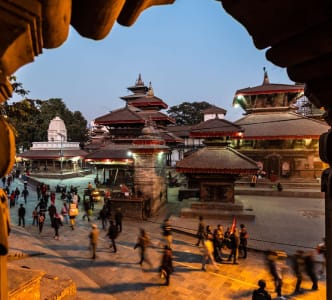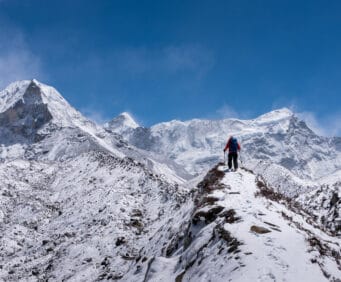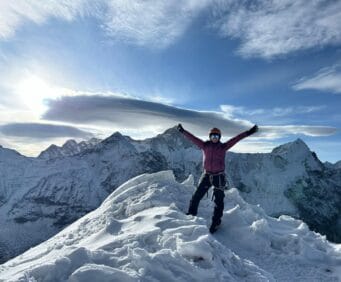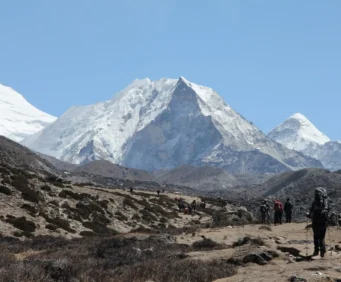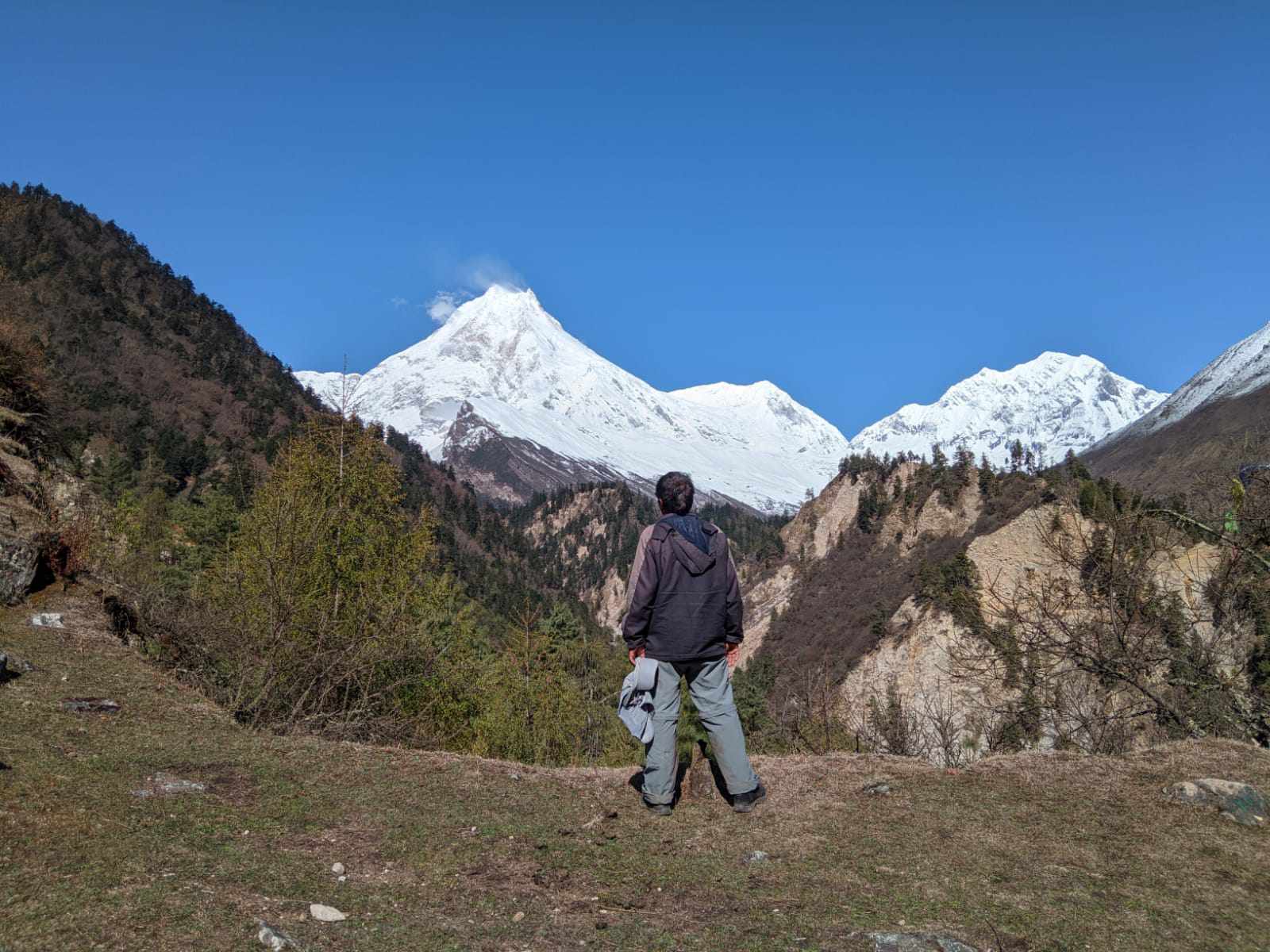
Manaslu Trek Itinerary
11th August, 2024 - Posted By: Himalayan AbodeThe Manaslu Trek is just as fascinating and not as touristic as the more popular treks in Nepal such as the Annapurna Circuit or the Everest Base Camp. This tour is around the eighth tallest mountain in the world, Mount Manaslu, which measures 8,163 meters or 26,781 feet. In this blog, you can explore the Manaslu Trek itinerary, and overview of what makes the Manaslu Trek special:
Overview of Manaslu Trek
1. Remote and Less Commercialized
The Manaslu region is comparatively off the beaten path than most trekking trails, which many might prefer. Few people visit the trail and as such traversing through the Himalayas is always quite serene.
2. Stunning Scenery
The trek also has a variety of scenes including a green forest, the rice terrace, and hot high mountains. It will take you through villages, cross suspension bridges at roaring rivers, and see wonderful prospects of mountains inlcuding the Manaslu.
3. Cultural Richness
Concerning the ethnography of the Manaslu region it is inhabited by both the Gurungs and the Nubri, who are mainly of Tibetan origin. During the trek, you can get views of ancient monasteries, prayer walls, Manuscripts, chortens, and many more. The trek as described is immersed in the Tibetan-Buddhist culture the closer you get to the border of Tibet.
4. Larkya La Pass
Another interesting aspect of the trek is that the highest point of the trek is the Larkya La Pass, which stands at a height of 5, 106 meters ( or 16,752 feet). This quite tiring but very exciting and interesting part of the trekking allows tourists to get a beautiful view of Himlung Himal, Cheo Himal, and Kang Guru.
5. Conservation and Sustainability
The trek is also through the Manaslu Conservation Area, region that is set up to protect ecosystems where the process of tourism development is pursued. Its fauna is also diverse and the opportunities to see animals like the Himalayan Thar, blue sheep, and also the snow leopard exists.
6. Teahouse Trekking
Unlike some of the other treks where one requires carrying out camping, the Manaslu Trek can be done with Teahouse/Lodge accommodations. The teahouses have a very rudimentary infrastructure and provide food along with some accommodations and social situations with other tourists.
7. Permits and Regulations
The Manaslu Trek is near the Tibetan border and lies in the conservation area hence, trekkers need to obtain special permits; the Manaslu Restricted Area Permit, ACAP and TIMS card. A guide is compulsory on this trek and this guide is responsible for the safety of the trekkers as well as their belongings.
8. Best Time to Trek
While the idea of trekking to the region is all year round there are preferable seasons and they include; March to May, and September to November. These months have the most predictable climate and less fog and it is therefore suggested that astronomy be done during these months.
9. Physical Fitness and Preparation
The trekking is said to be tough owing to the long distance, altitude, and the fact that one has to cross the Larkya La Pass at such a high altitude. Preventive measures such as acclimatization and physical fitness coupled with correct preparations ensure that one has a great time while at it.
It is an excellent option for all mountain enthusiasts who would like to avoid the crowded trails of Nepalese trekking during cultural interactions with the locals and while enjoying the beautiful views of the great Himalayas.
The Manaslu Circuit Trek is another spectacular and challenging trekkers’ destination of Nepal, which surrounds Mount Manaslu. This journey will pass through different terrains, different ethnic group settlements, and over the Larkya La that is considered to be quite steep. Here’s a detailed outline of the Manaslu Circuit Trek route:Here’s a detailed outline of the Manaslu Circuit Trek route:
Manaslu Trek Itinerary or Route
The Manaslu Trek is an astonishing cultural and physical experience that takes you across the various biospheres, ethnic groups’ settlements, and beautiful terrains in the heart of the Himalayan region.
Day 1: Arrival in Kathmandu – (1,350m)
You land in Kathmandu first day which is the starting point of the trek and depending on arriving time we could be doing some sightseeing around the city or get my trekking permits sorted.
Day 2: Kathmandu to Soti Khola (710m): By bus & drive
Duration: 7-8 hours
It involves taking a beautiful drive from the capital of Nepal, Kathmandu to Soti Khola, with some wonderful views of beautiful countryside and petty towns on the way.
Day 3; Soti Khola to Machha Khola (900m)
Duration: 6-7 hours
Firstly, it involves the walk past various barley fields, sub-tropical forests, and villages along the banks of the river which will lead up to the village of Machha Khola.
Day 4: The trail stretches for half an hour, followed by a steep descent through a forest trail and apple orchards, leading to Jagat at 1,410m.
Duration: 6-7 hours
Carry on through the forest staying near the Budhi Gandaki River, traverse several suspension bridges, and walk through small villages. In the region before Jagat, the trial steepens.
Day 5-Jagat to Deng (1,804m)
Duration: 6-7 hours
The trail initially rises up through lovely forests, some rivers are crossed and the villages of Salleri and Sirdibas are also passed through. The trek is carried out to Deng; a small village.
Day 6: Deng to Namrung (2,630m)
Duration: 6-7 hours
Higher up you will be able to observe the difference in the terrain and ethnic group, where the influence of Tibet will be observed. The trail moves through the villages of Ghap and Namrung.
Here again, the overnight stay is in Trekkers’ Lodge Trek to Lho, a distance of 8 km, which takes about 6-7 Day 7: Namrung to Lho (3,180m)
Duration: 4-5 hours
Off road the scenic forest and the fields to have a worthy destination of Lho; the big valley with an impressive view of Manaslu Himal and wonderful monasteries.
Day 8: Lho to Samagaon or Sama Gaon – 3,530m
Duration: 4-5 hours
The trail goes on through lovely country and fine views of Manaslu and other mountains. Samagaon is a big village where visitors often spend the night to acclimatize to the conditions.
Day 9: Acclimatization day at Samagaon I woke up early this morning, and after taking some hot water and having my breakfast I headed out to Samagaon with my guide.
The day is spent discovering Samagaon and the neighboring areas. One can visit the Pungyen Gompa or start trekking up to the Manaslu Base Camp at (4400m) for their acclimatization.
Day 10: Samagaon to Samdo (3,860 meters)
Duration: 3-4 hours
A comparatively small amount of walking on the stony and scenic terrain to the village of Samdo, which is located at the border with Tibet.
DAY 11 : Samdo(4,200m) to Dharamsala(4,460m)
Duration: 3-4 hours
Keep on walking through the mountainous marshlands to reach Dharamsala or Larkya Phedi, which is the starting point for crossing Larkya La.
Day 12: It was a long day where they crossed Larkya La Pass (5,106m) also and trekked to Bimthang (3,720m).
Duration: 8-9 hours
Considered the most difficult of the trek, the day begins early to cross Larkya La Pass which is the highest point in the trekking route. The climb is very steep, but reaching the top rewards you with views of various other hills Once you exit the pass, you will find yourself in Bimthang.
Day 13: Navigate to Bimthang (3,720m) After breakfast start walking for five hours to arrive at Tilije (2,300m).
Duration: 5-6 hours
It goes on through the RHODODENDRON and then through the region of glaciers and small villages to get to TILIEJ.
Day 14: Tilije to Dharapani (1,860m) and Drive to Besisahar
Duration: 5-6 hours hiking only and the rest of 2-3 hours driving.
Move on to Dharapani which is the point at which the Manaslu Circuit interlaces with the Annapurna Circuit. After Dharapani, continue the drive to Besisahar.
Day 15: From Besisahar drive back to Kathmandu
Duration: 6-7 hours
A long drive back to Kathmandu, you will have some time for introspection of your trekking expedition.
Day 16: Departure from Kathmandu
On taking our stuff with us back home so we had to carry the Nepal climate with us with many feelings and memories back home.
According to your time, you may have the option to visit more of Kathmandu or shop for some final items or pack for the return journey.
Key Points of Manaslu Trek
- Total Duration: 16 days
- Max Elevation: 5,106m at Larkya La Pass
- Difficulty: Challenging
- Best Time: March to May and September to November
The Best time to go for Manaslu Trek
The most recommended time to go for Manaslu Circuit Trek is in the early part of the year from March to May and towards the end of the year from September to November. Ideally, these periods are the best for the weather conditions making the trek easier and safer as compared to other periods.
Spring (March to May):
- During spring, temperatures rise, making it a stable period for trekking. The days are rather hot, and at night it is somewhat cool but moderately freezing, especially in areas of high altitude.
- Scenery: This season is colorful, flowers such as the Rhododendrons and other floral species such as the lilies start blooming in this season making the trail colorful. This visibility is normally very good enabling one to have wanted views of the surrounding mountains including Mount Manaslu.
- Crowds: Nonetheless, even though spring is the best season for a trek, the Manaslu Circuit Trek remains comparatively less crowded than the treks like Annapurna Trek, Lang Tang Trek, or the Everest Trek.
Autumn (September to November):
- Weather: Another suitable time to visit the Manaslu Circuit Trek is in the autumn since the monsoon has already compromised, and by this time, there is nothing but clear skies. It is rather warm to hot during the day, and cool in the evening and at night particularly in the higher altitudes.
- Scenery: Er jouer à la fin juin et au début de juillet, après la mousson et avant la mousson de septembre-octobre, qui permet de bien voir les montagnes et les paysages sont vertes après les pluies. The cultural events in the villages on route like the Dashain and Tihar also complement the culture.
- Crowds: Autumn also attracts more trekkers similar but the Manaslu Circuit Trek is still comparatively less crowded than the other trekking routes.
Other Seasons:
- Winter (December to February): Trekking in the winter is possible but relatively strenuous, because of the low temperatures, and deep snow on the higher trails, especially around Larkya La Pass. Professionals should attempt the snowy trek, and they should wear proper clothing during the winter season.
- Monsoon (June to August): The wet season receives a lot of rain hence there are high chances of slips or even landslides on some of the trails. Clouds often cover the area, and leeches inhabit the lowland forest parts, making this season generally avoided for the Manaslu Circuit Trek.
Overall, spring or autumn is recommended for the Manaslu Circuit Trek, as weather conditions are favorable, the scenery is breathtaking, and the challenges are mild.
Conclusion
Thus, the Manaslu Trek is one of the most fascinating treks of Nepal that covers the isolated and stunning area of the country. Such a natural variety, cultural discoveries and physically engaging trails assured make Sichuan a trip, one to remember.
The ideal time to opt for this trek is during the spring season, from March to May, and the autumn season, from September to November, when the climate is fabulous, and visibility is clear, revealing the true beauty of the Himalayas.
The Manaslu Trek is for people who want to go for a solitary walk, for those who want to experience the local culture, or for those who have a penchant for trekking in the mountains, this trek offers the best value among most of the treks in Nepal.
Recent Posts
